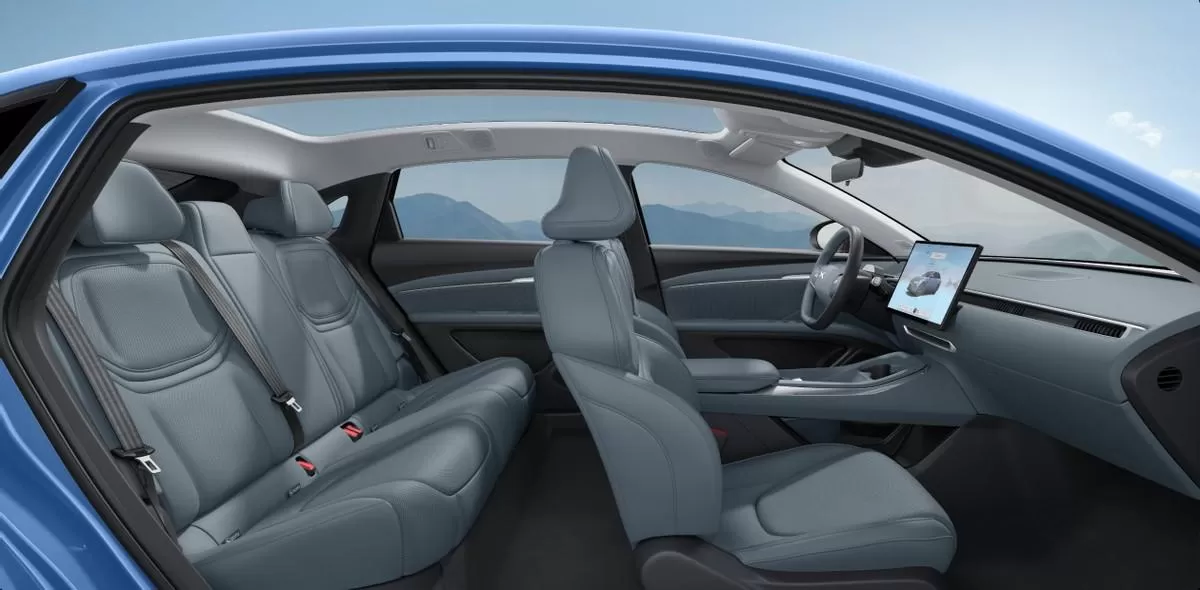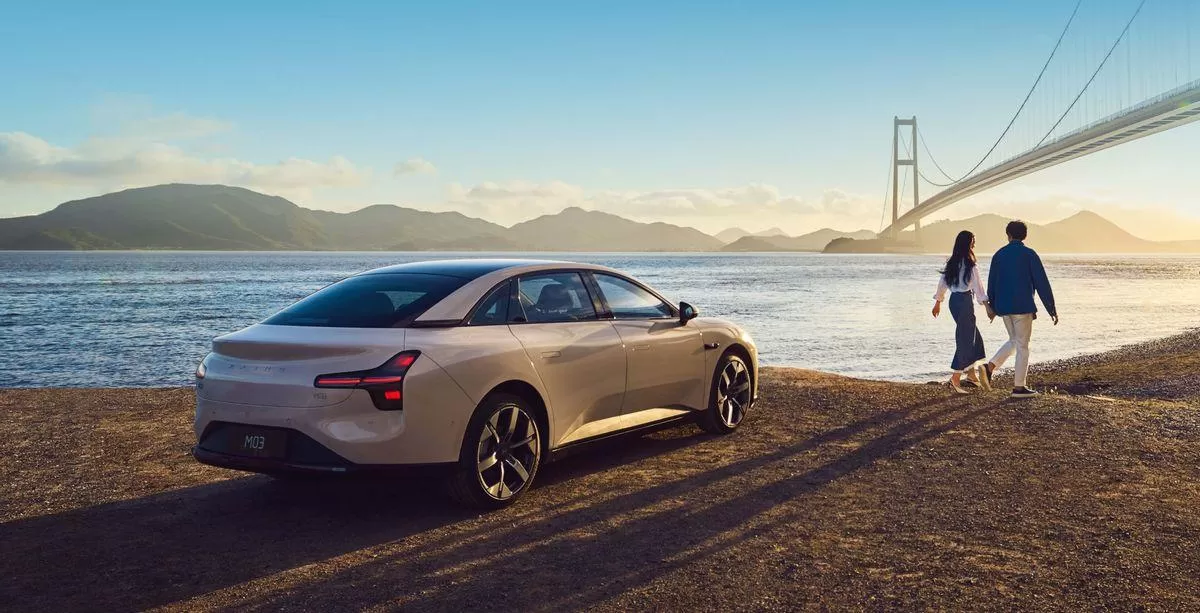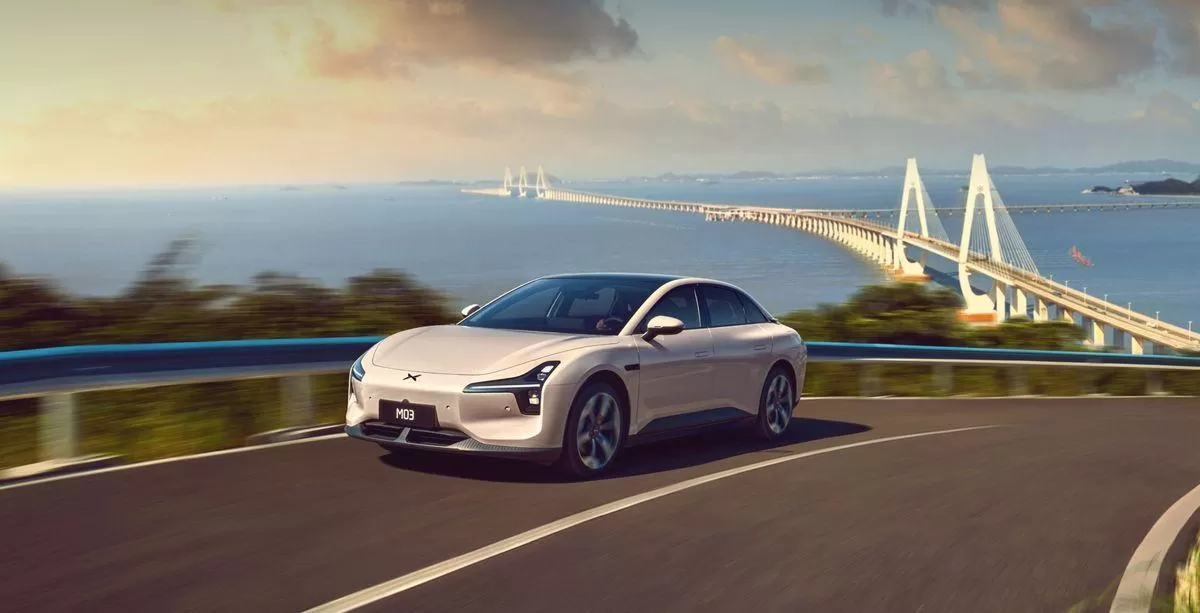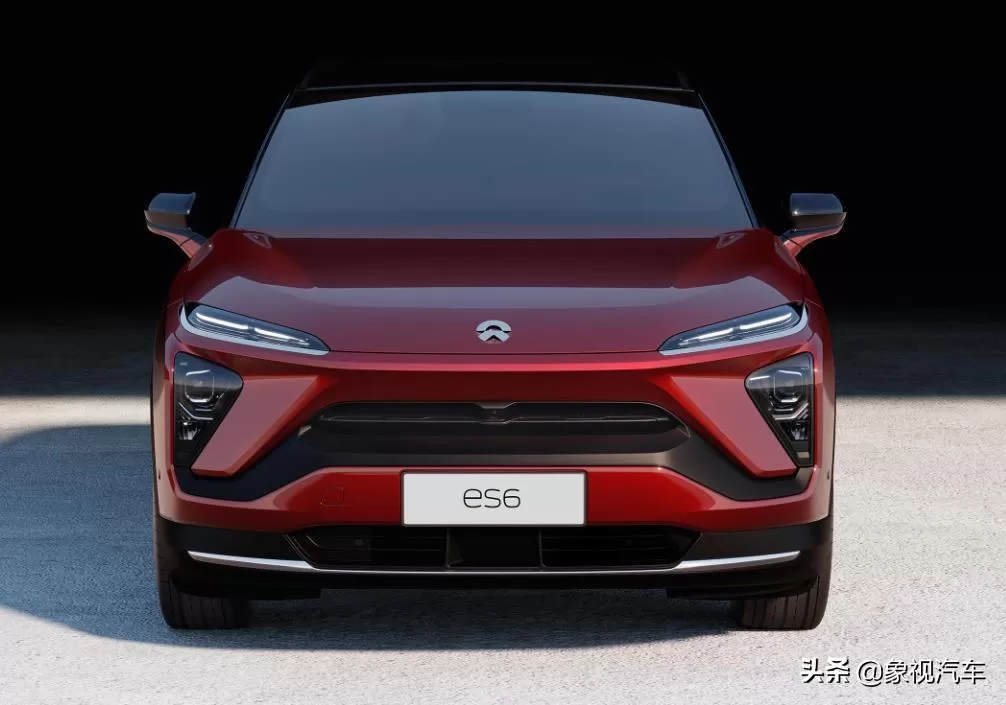Within 52 minutes of its launch, over 10.000 orders were placed.
The last time there was such a buzz and widespread attention, it was for the Xiaomi SU7.
Today, the car we’re discussing is also part of the "Xiao" family and is closely connected to Lei Jun. Although it hasn’t replicated the sales legend of the Xiaomi SU7. from a market perspective, it has at least had a successful debut. This car is from Xpeng Motors and is called the MONA M03.
Some people are particularly optimistic about the Xpeng MONA M03. believing it could rival Tesla as the best first car under 200.000 RMB for young people, achieving true smart driving for everyone.
However, there are also opposing views and doubts, as Xpeng’s influence and market share have visibly declined. Can the same product with a different shell guarantee strong sales?
Judging by the current market feedback and future predictions for the MONA M03. it seems possible that its sales won't be bad.
First, let's look at the order volume: it received over 10.000 orders in less than an hour. Based on Xpeng Motors' past data, the total cumulative sales in the first seven months of this year were around 63.000. averaging less than 10.000 units per month. The MONA M03 alone has achieved the brand's monthly sales figure, and this is just from its initial appearance. As the actual cars arrive in stores and more people experience it, the MONA M03's sales performance could potentially see a breakthrough.

It’s highly likely that the sales of the Xpeng MONA M03 won’t be bad. In other words, the MONA M03 might become the next hit product in the 100.000-150.000 RMB price range. However, the Xpeng MONA M03 is an average car, especially the entry-level version.
Here are the five main reasons why this car is considered average:
1. The most notable aspect of the Xpeng MONA M03 from the beginning has been its price. Xpeng has always followed a value-for-money approach. Now that it’s launching a low-cost series, the price of the M03 is the most discussed aspect. Starting from an initial price range of 150.000 RMB, then under 200.000 RMB, and eventually a pre-sale price of over 130.000 RMB, the final official price is 119.800 RMB. Xpeng has a clear understanding of its market positioning and brand perception, not blindly raising prices just because the initial pre-sale phase generated some buzz. From the perspective of the MONA M03's product strength, it’s worth around 110.000-120.000 RMB. While the price seems advantageous, it’s actually the result of pre-launch marketing hype, making the final price a reasonable one considering the product’s strength.
2. The mechanical quality is average. It features a front MacPherson independent suspension and a rear torsion beam independent suspension. It's not that MacPherson and torsion beams are necessarily bad, but it’s rare to see cars over 100.000 RMB still using a torsion beam suspension. This setup is common in this price range and doesn’t offer any particular advantage, which is why the price was always going to stay below 150.000 RMB.

3. The so-called “smart driving for everyone” is powered by the Qualcomm Snapdragon 8155 chip. However, this chip is already standard in its class, so it doesn't stand out or offer any advantages. It's fairly average in this regard. That said, I would recommend going for the fully loaded version of the car.
4. The range performance is also average. The car offers three range options: 515 km, 620 km, and 580 km. The entry-level version with a 515 km range is similar to other cars in its class, like the Leapmotor C01. GAC Aion AION S, and the Yi Pai 007 and Qiyuan A07. The MONA M03 doesn’t offer any significant advantage here.
5. No dashboard: The innovative design is based on the removal of physical buttons, relying on the large screen for operation. The air conditioning vents are automatically adjustable, which some people may not like.
The entry-level model may seem like a good deal, but in terms of product strength, it’s only worth the price. However, we shouldn't completely dismiss the MONA M03. as it has some unique highlights:
1. Design: The five-door, five-seat hatchback design, hidden door handles, and active air intake grille incorporate aerodynamic elements, reducing drag and improving range. The biggest highlight is the break from Xpeng’s previous design style—it doesn’t look like a typical Xpeng vehicle. For potential buyers, there’s finally a car priced just over 100.000 RMB that doesn’t resemble a ride-hailing vehicle.
2. Space: With a wheelbase of 2815 mm, it falls short compared to the Leapmotor C01 and GAC Aion AION S, but overall it offers relatively good space and user experience in its class. Don’t think that a torsion beam suspension has no benefits—it actually optimizes space for the rear seats and trunk.
3. It comes standard with L2-level assisted driving features. The number of cameras, ultrasonic radars, and millimeter-wave radars all surpass its peers. Features like LCC, ACC, and parking assist are not available in some competing models. In comparison, the Xpeng MONA M03 truly lives up to its “smart” label, offering convenient driving.
So, while the entry-level model isn’t great, it has its unique features. The most interesting and worthwhile version of the Xpeng MONA M03 is the fully loaded model.
The biggest differences between the entry-level and the next-lowest version are in range, front seat ventilation, and heating, as well as the addition of 256-color ambient lighting and a larger battery capacity. Beyond that, there aren’t many differences. The version most worth buying is the top-tier 580 km long-range Max version.

For 155.800 RMB, you get dual NVIDIA Orin-X chips with a total computing power of 508 TOPS, dual cameras, and support for intelligent navigation in both urban and highway settings. These are rare features in this price range and are what will help Xpeng truly establish itself in the sub-150.000 RMB market. The top-tier model really fulfills the brand's promise of making smart driving accessible, giving consumers more choices.
Moreover, the pricing of the Xpeng MONA M03 is much more reasonable this time, aligning with what consumers expect from Xpeng at this stage. However, blindly lowering the threshold for the models would only harm Xpeng’s brand image. The launch of the MONA series is a wise choice, capturing a gap in the current market. Aside from traditional fuel car manufacturers like BYD, Volkswagen, and Nissan, there are few new players in the 100.000 RMB market. The market share is still dominated by a few major players. While other brands like GAC Aion, Qiyuan, or Leapmotor have tried to enter this segment, their sales haven’t been able to dominate.
Compared to these brands, the Xpeng MONA M03 is not inferior. It offers a fresher design than brands like BYD or Volkswagen Lavida, appealing more to young people, and adds intelligent features for a competitive edge. This strategy of differentiated competition should result in strong sales.






